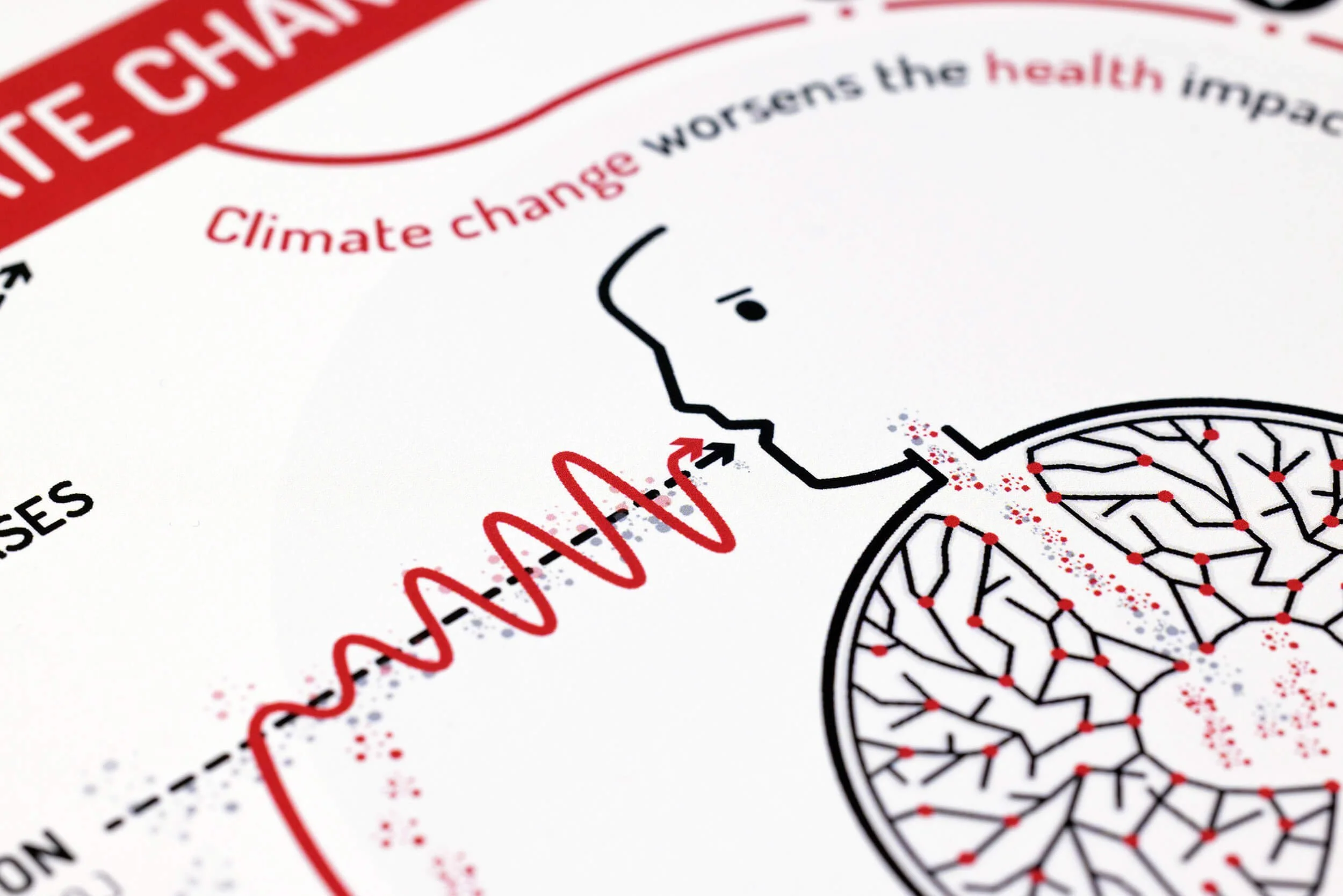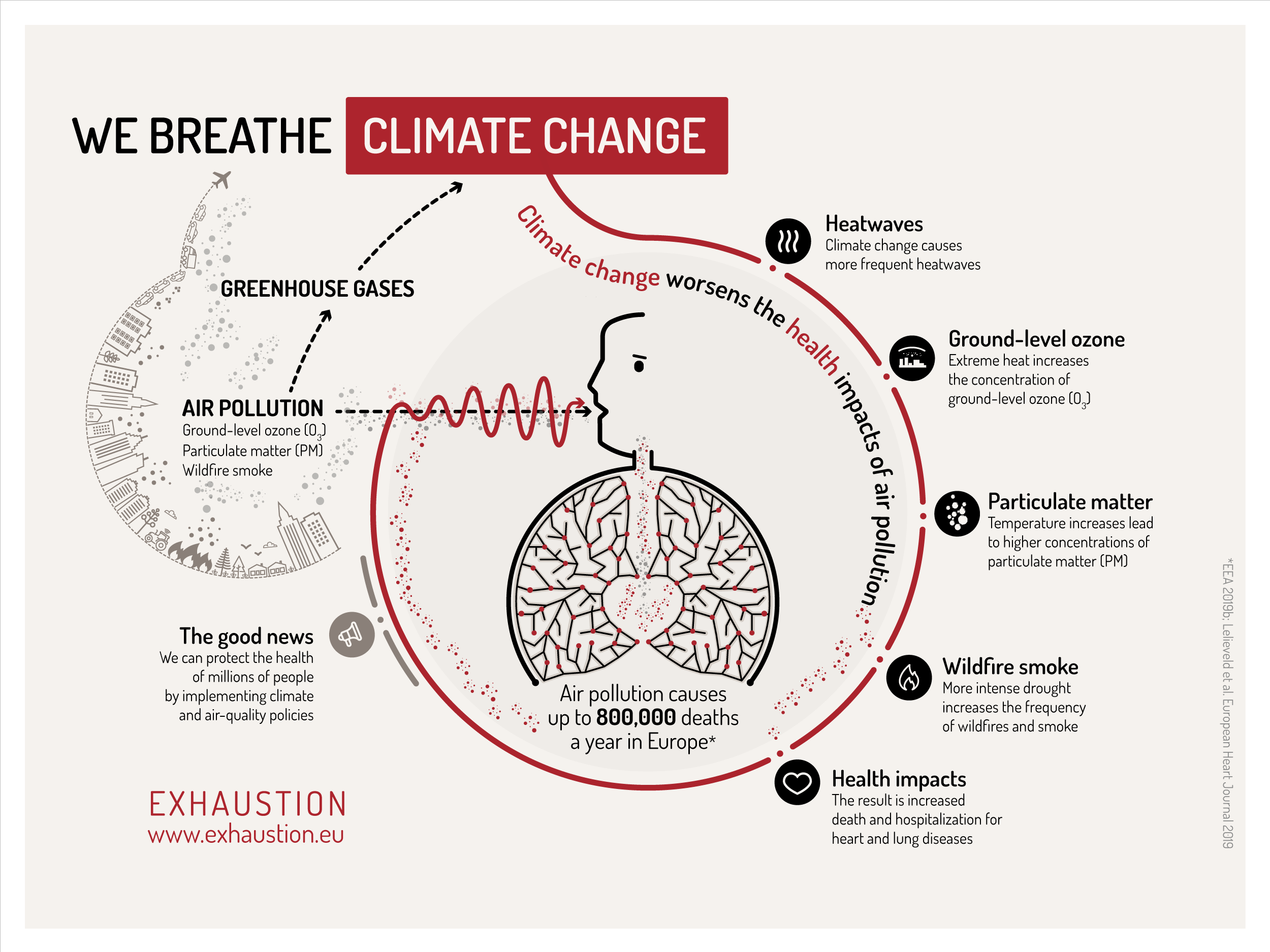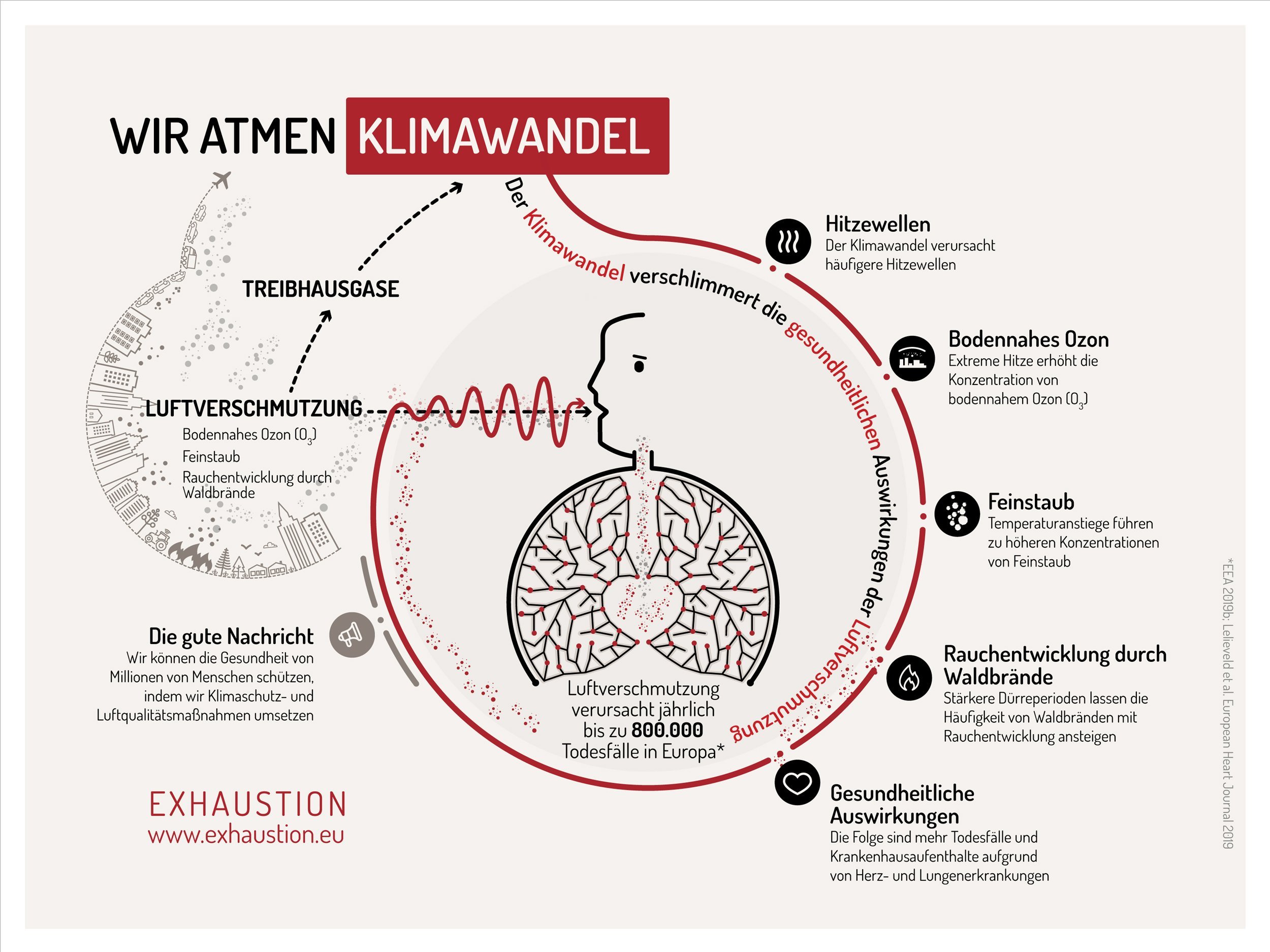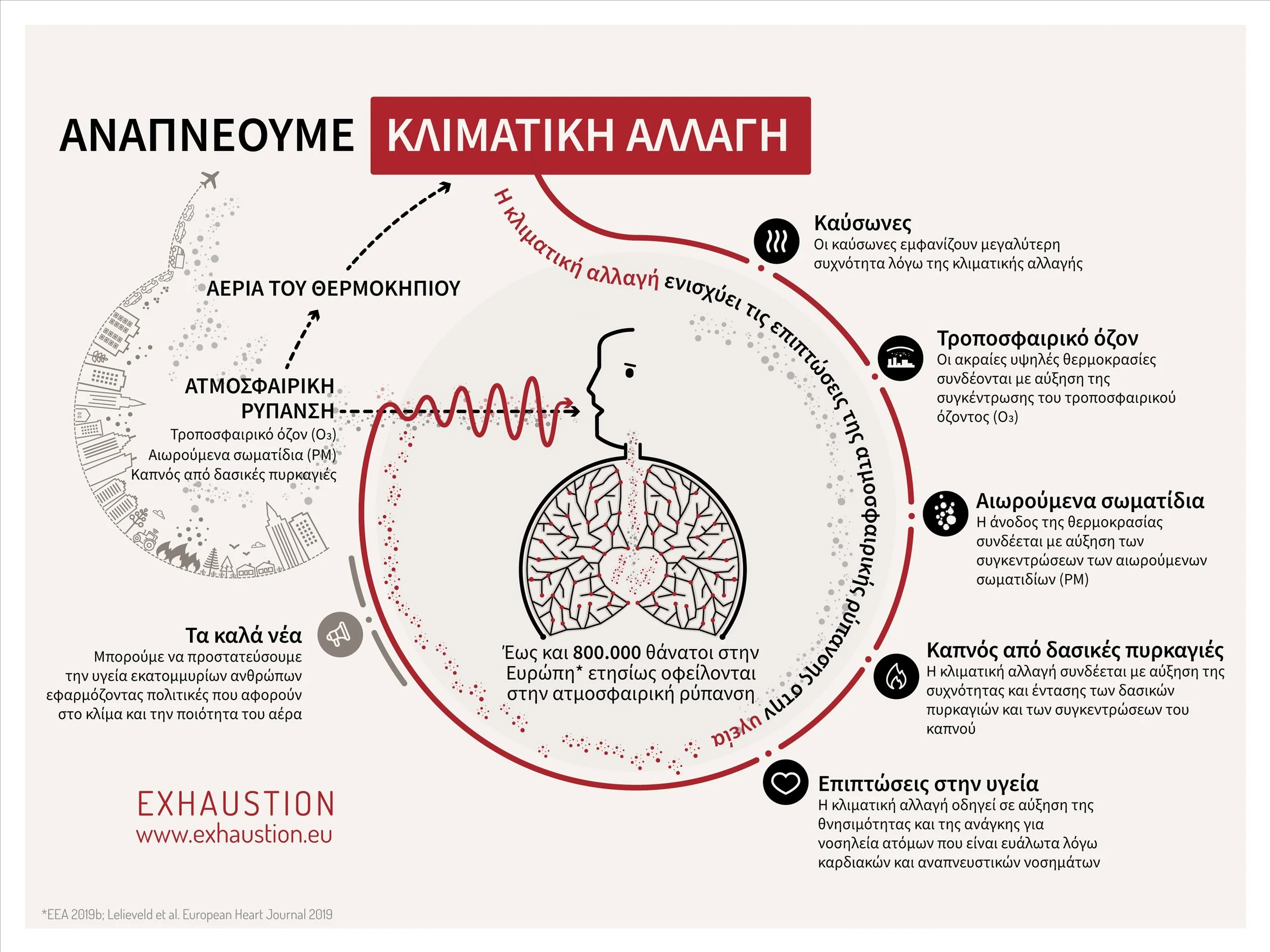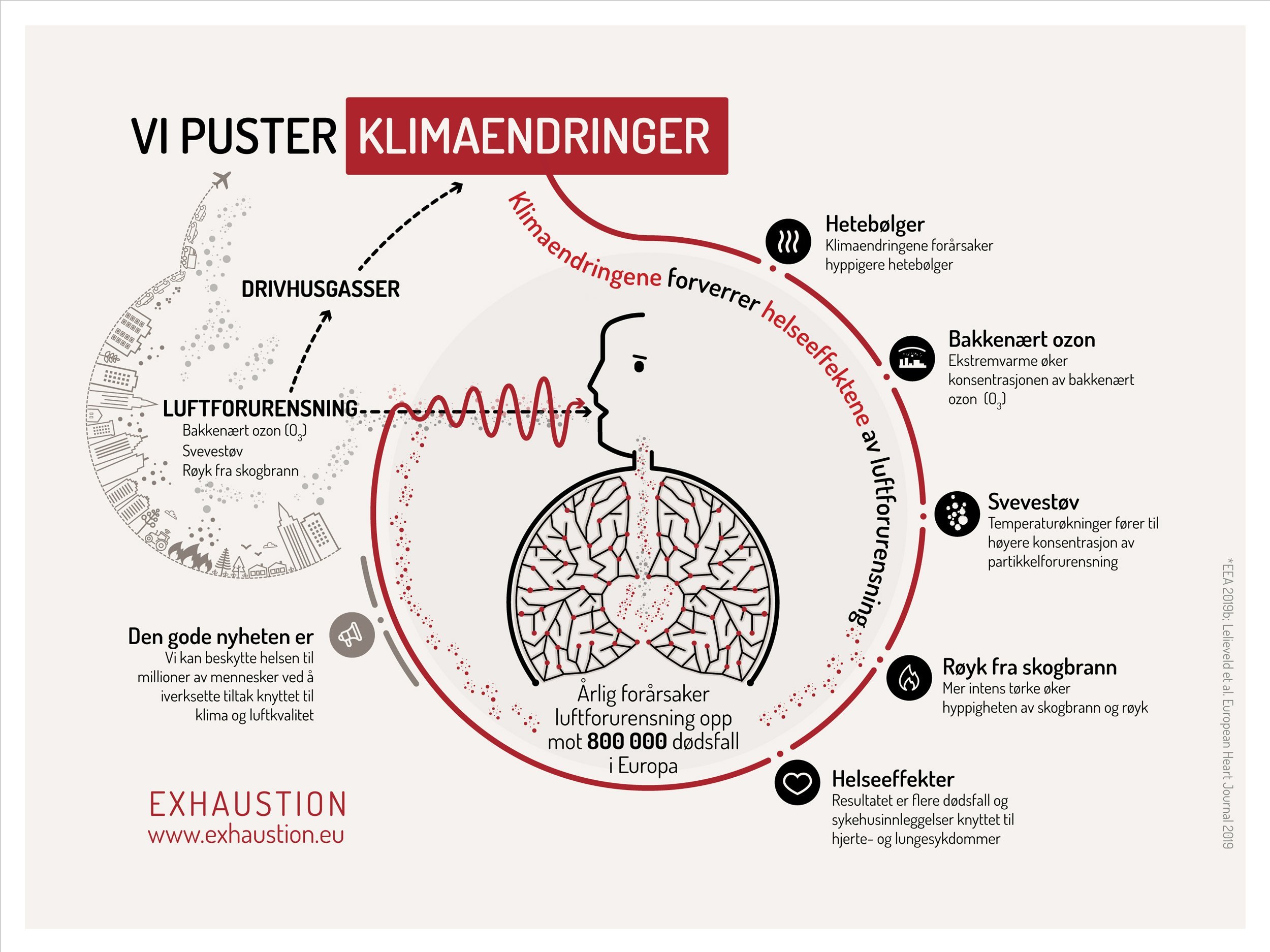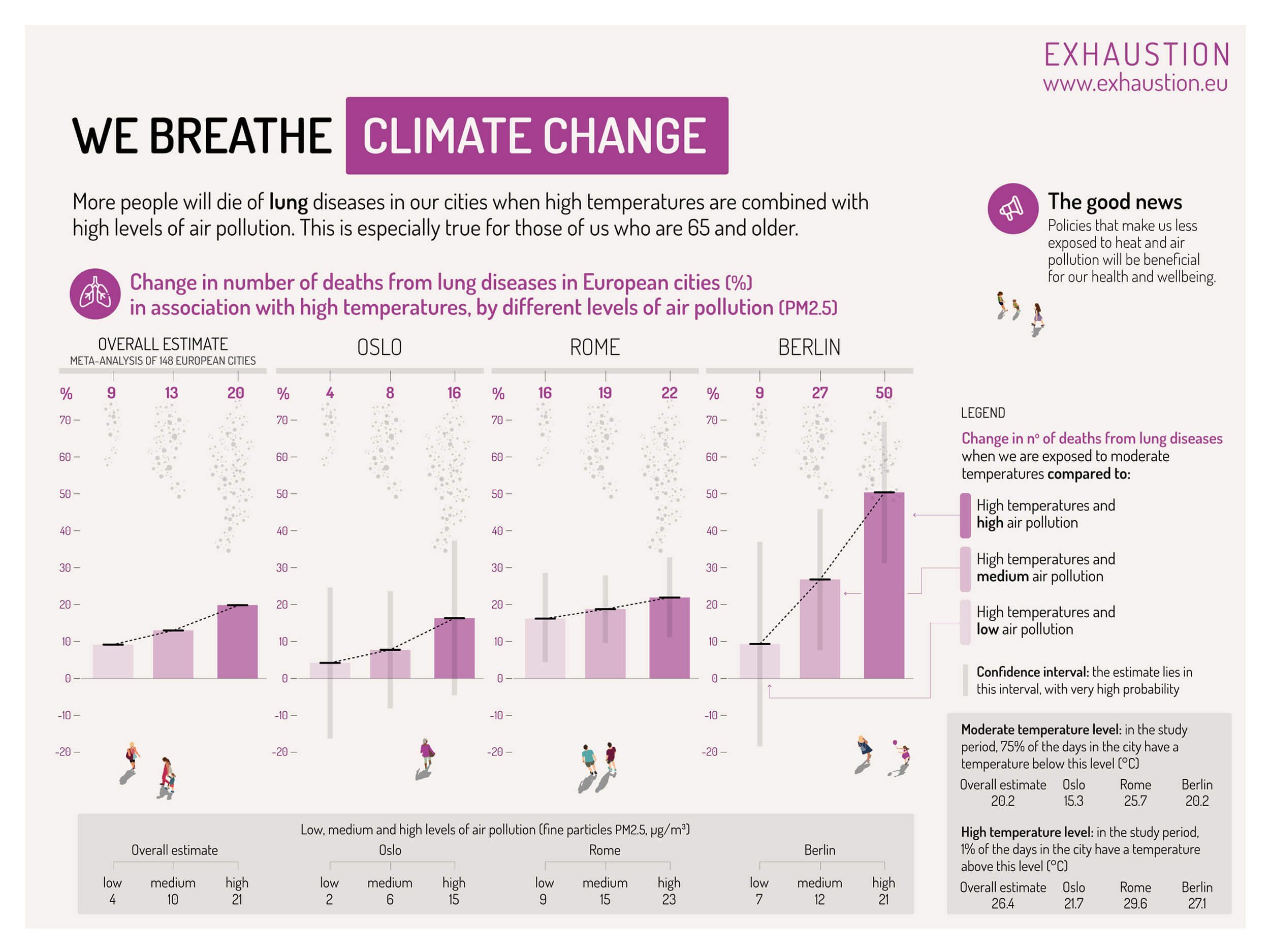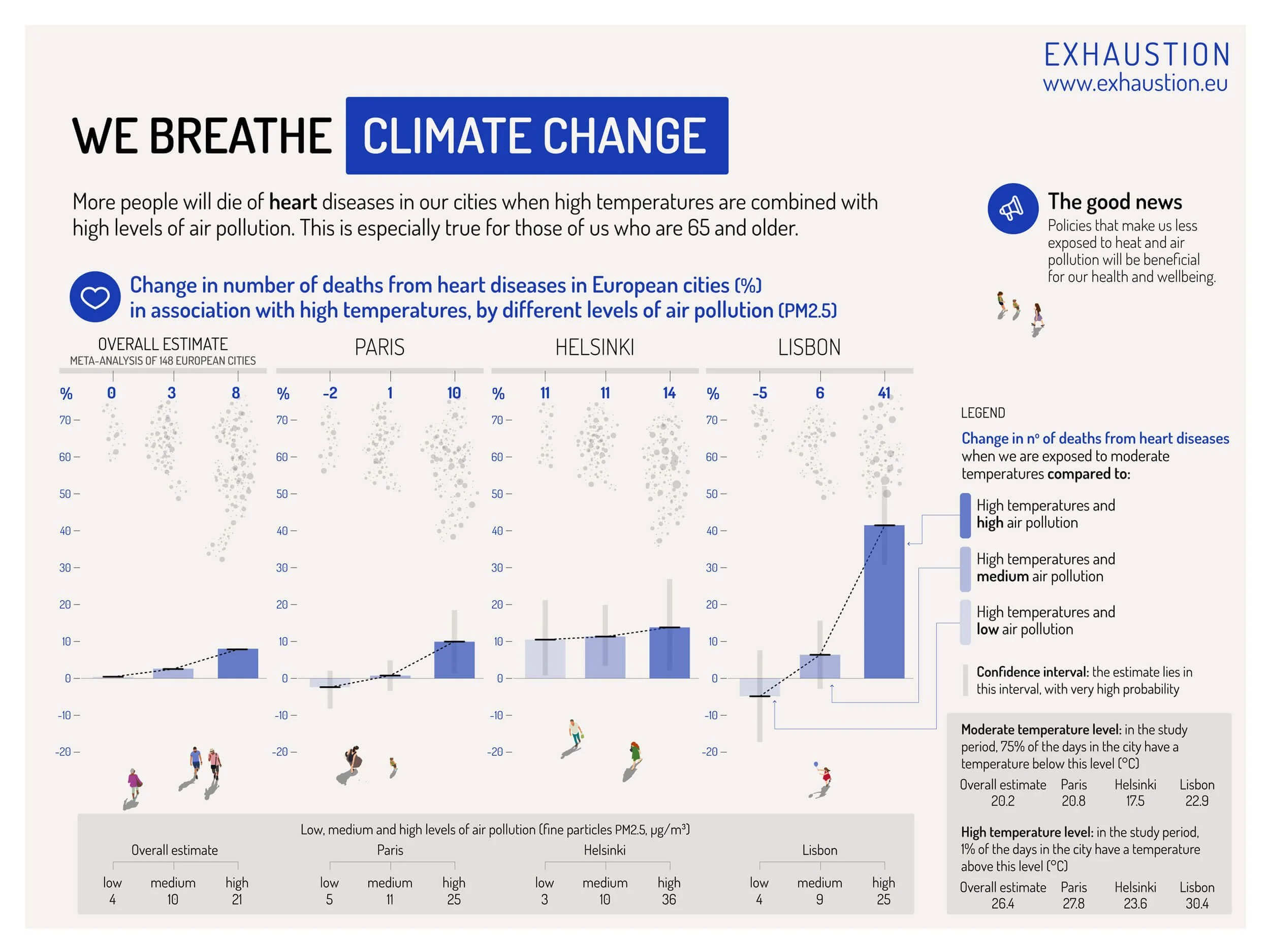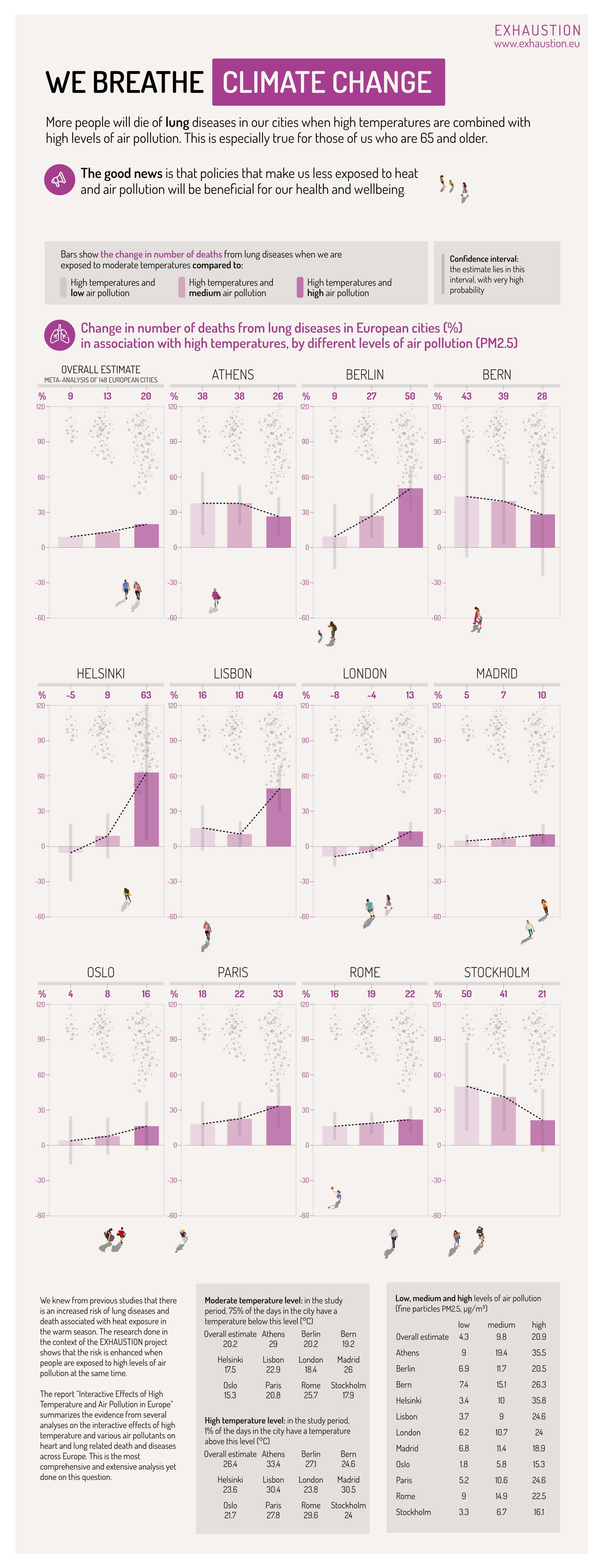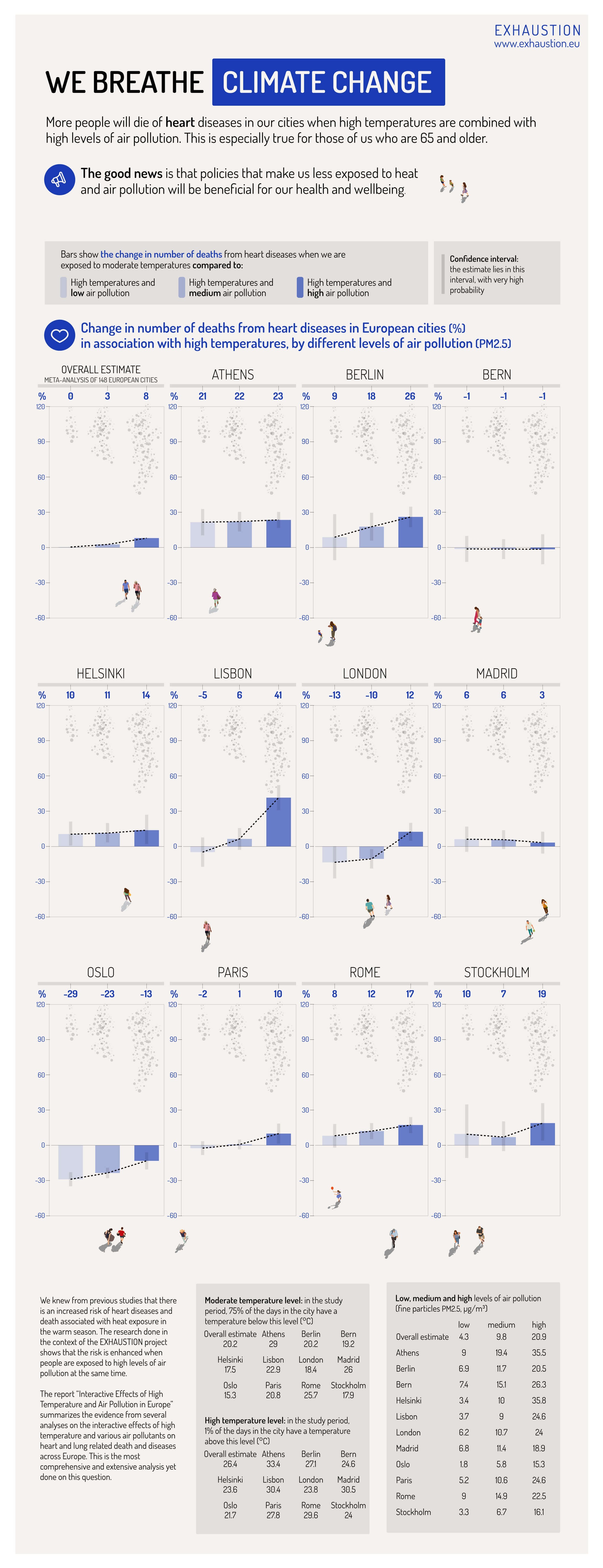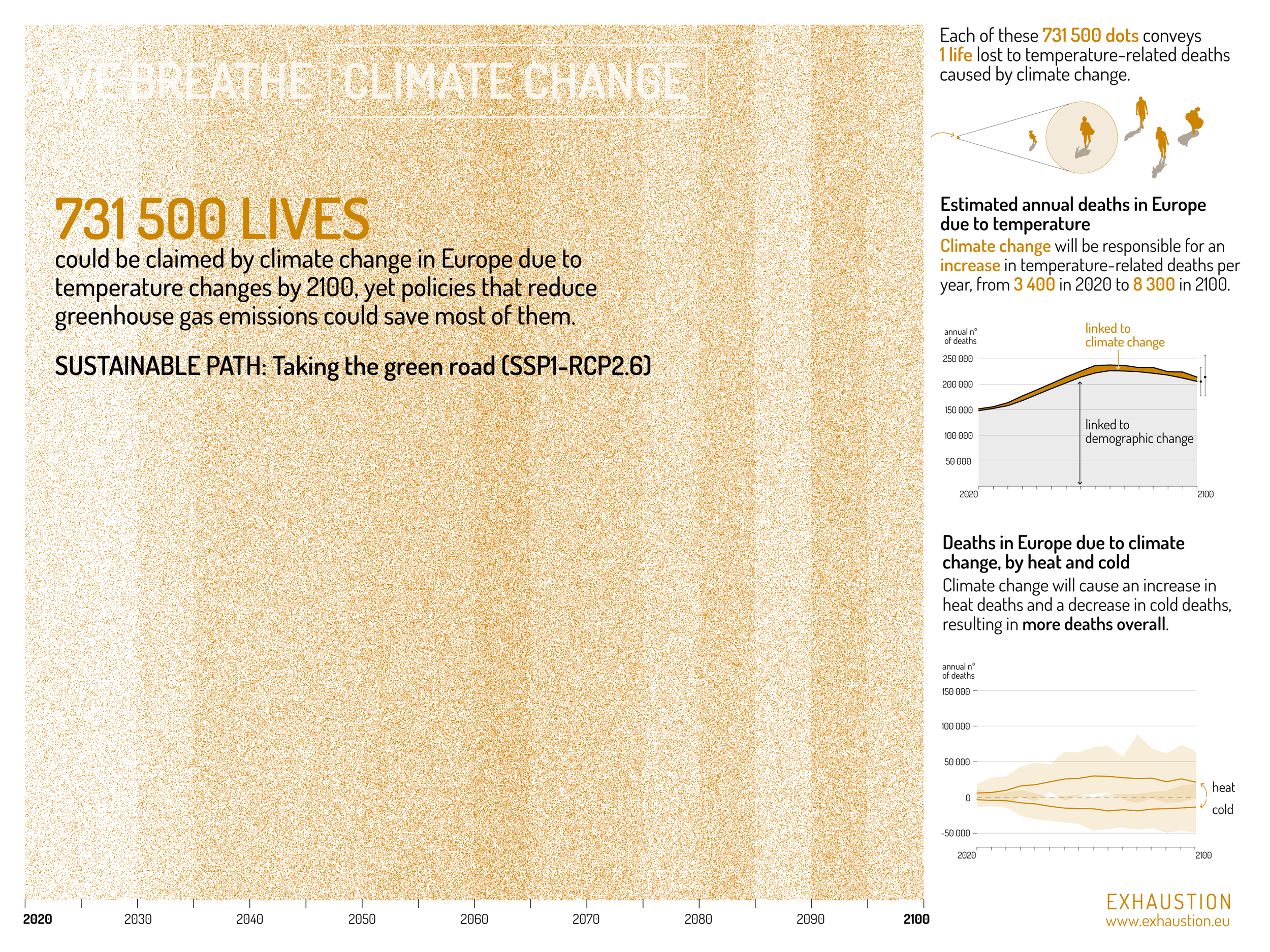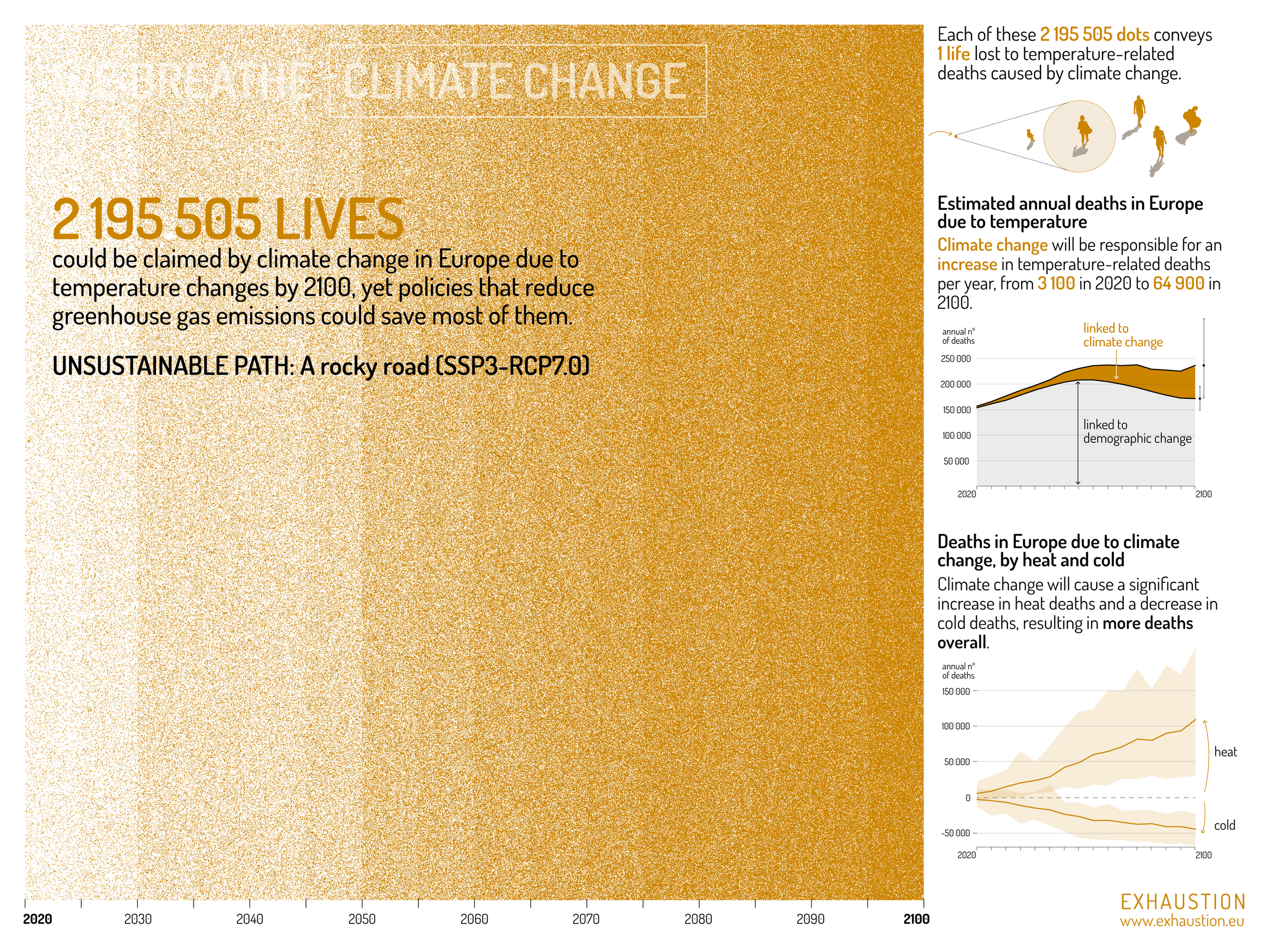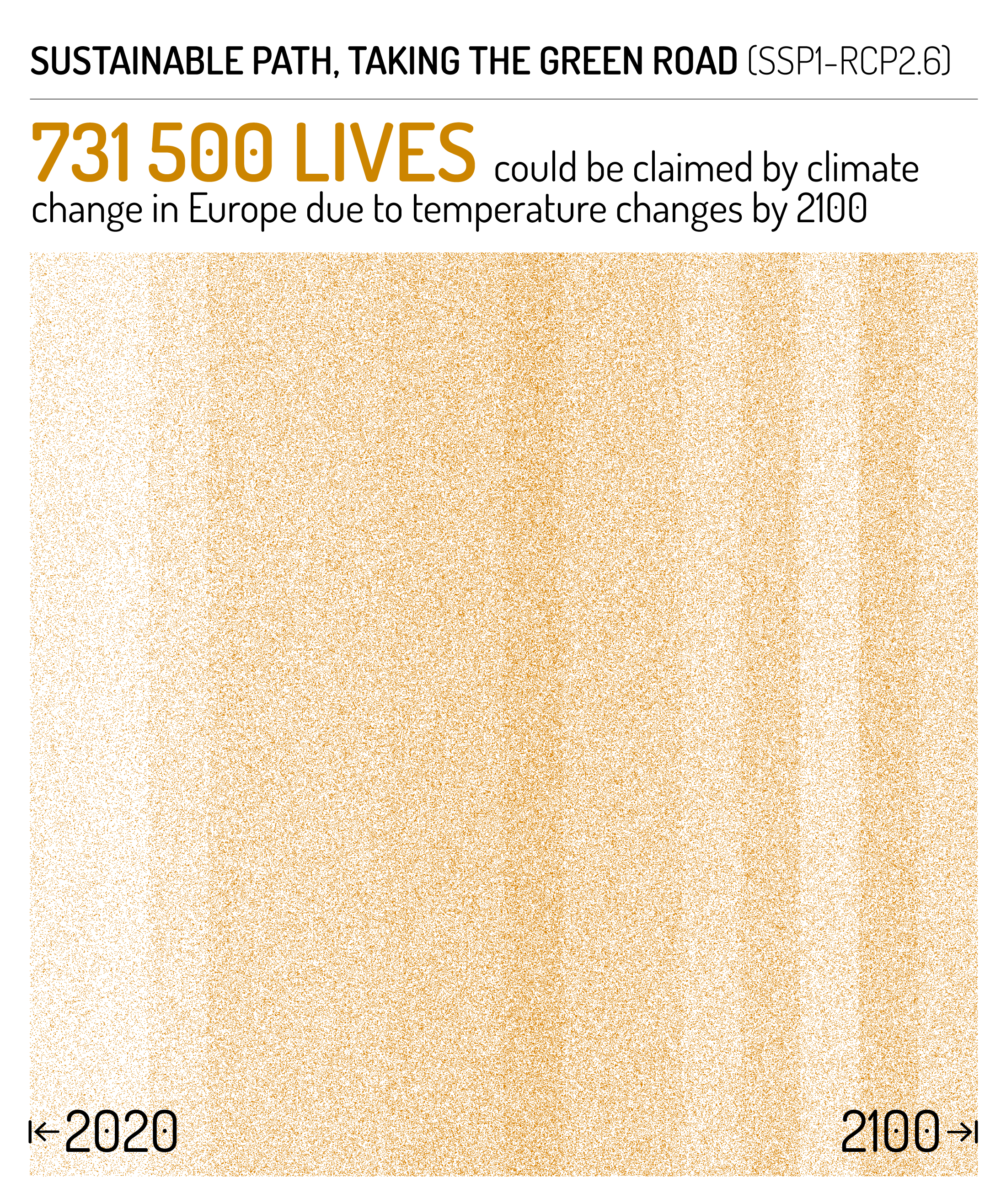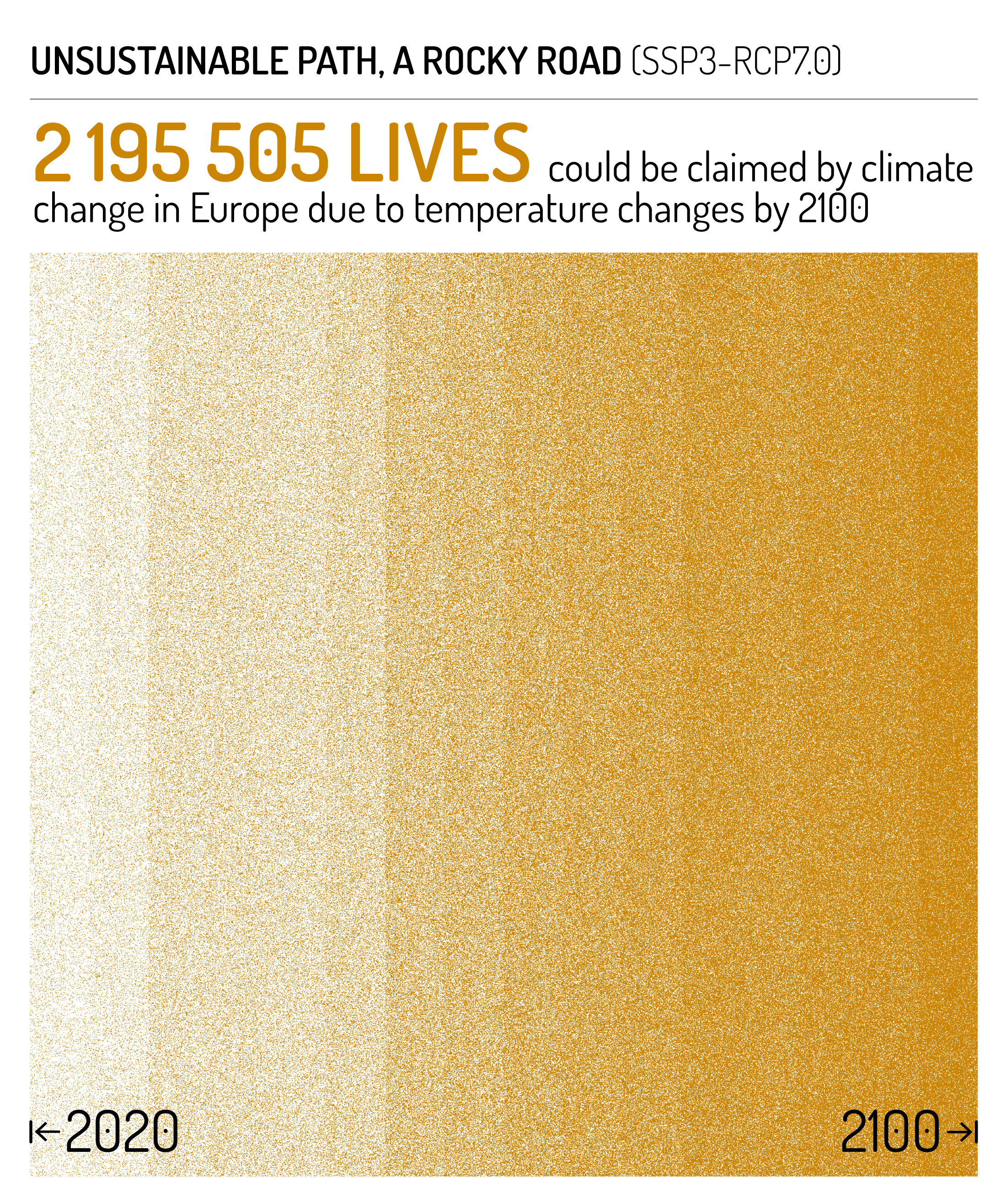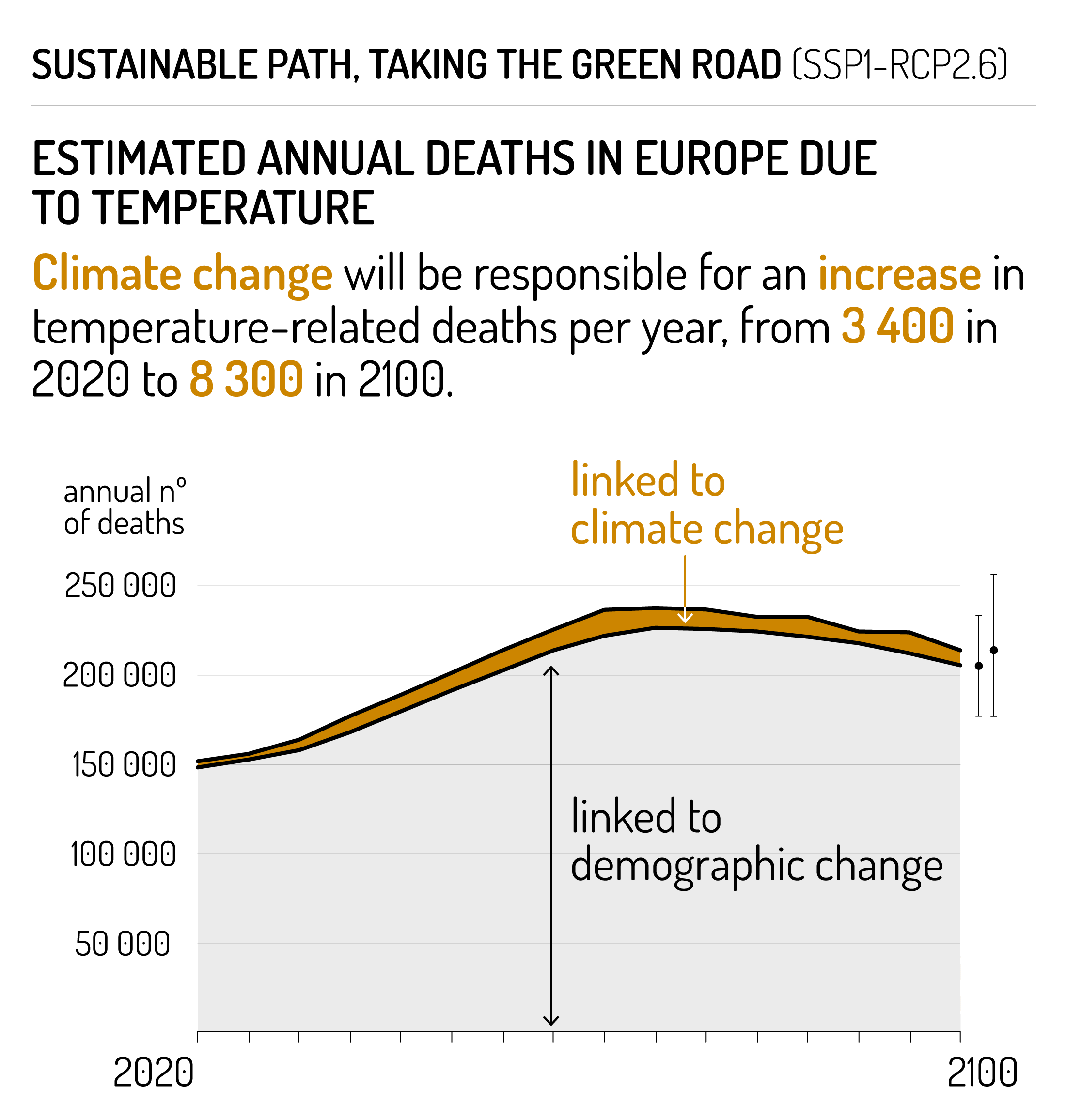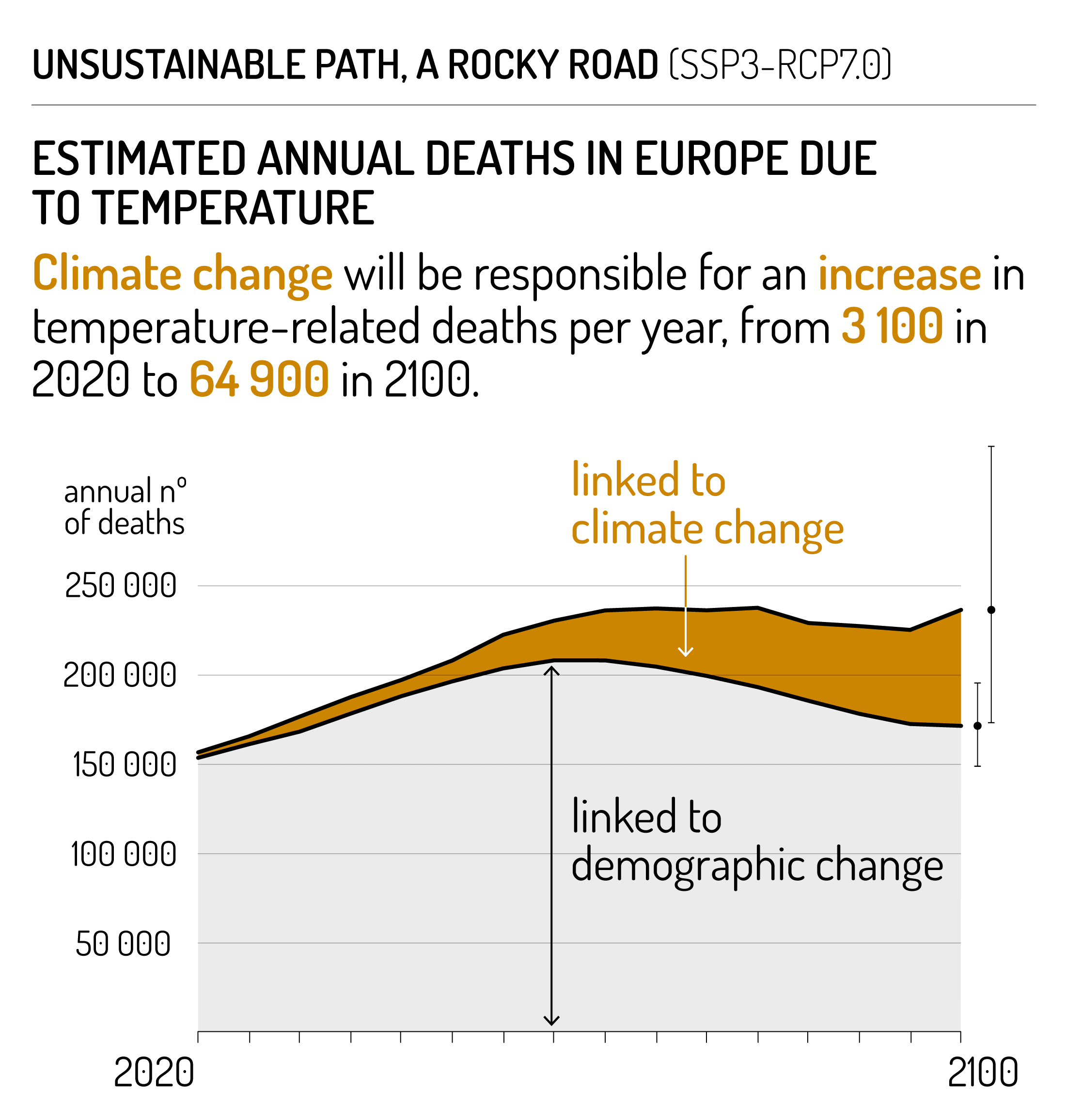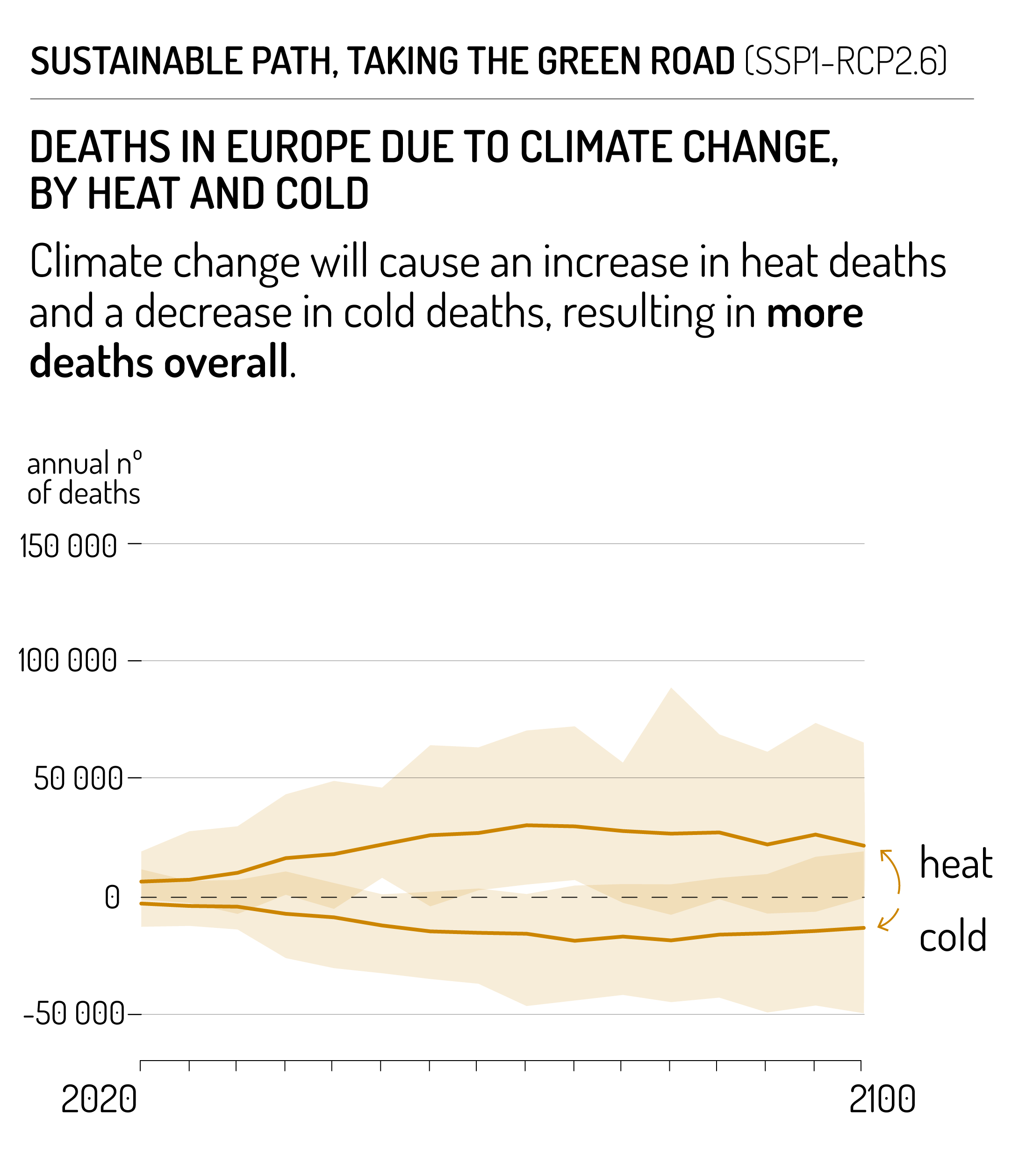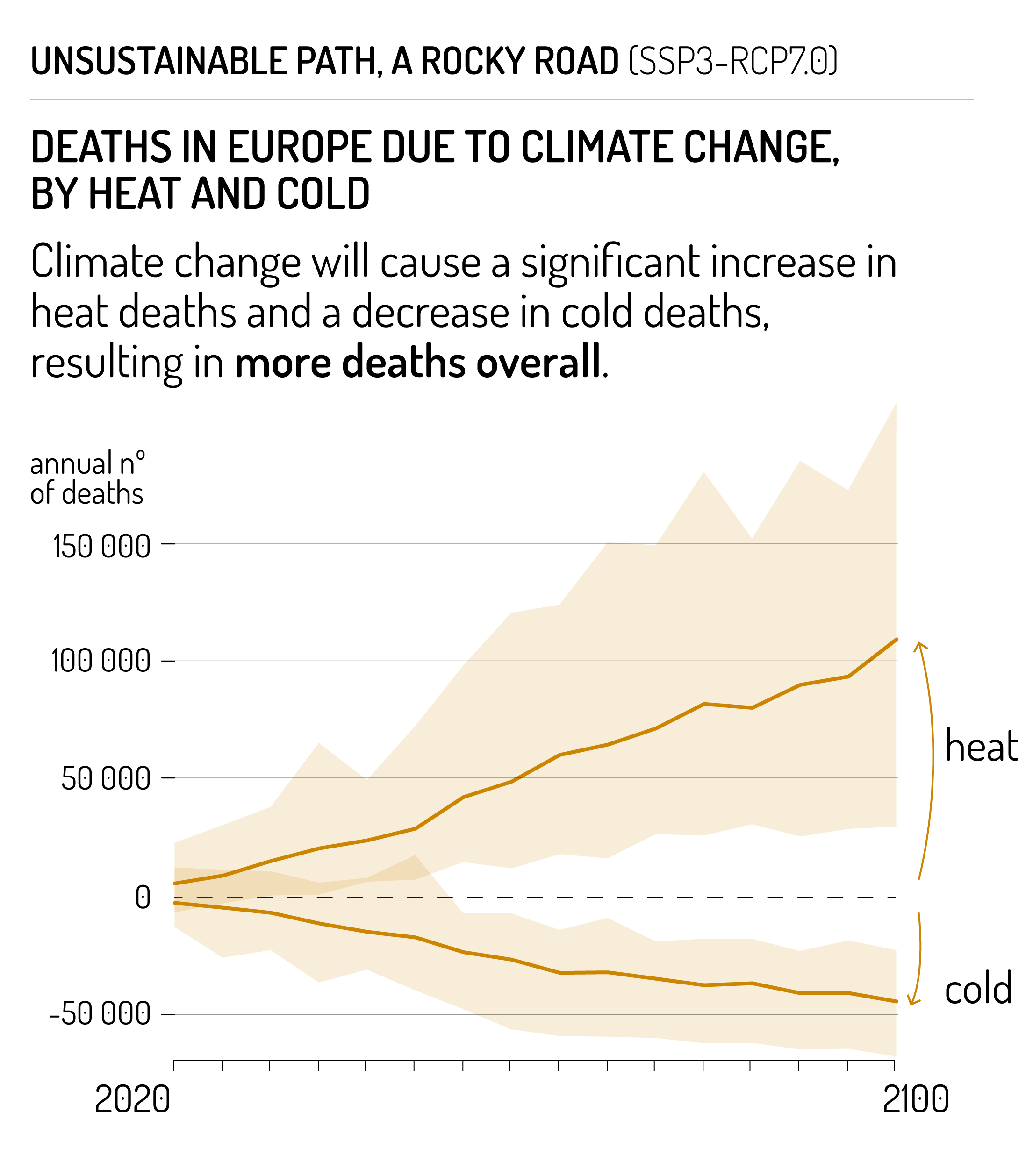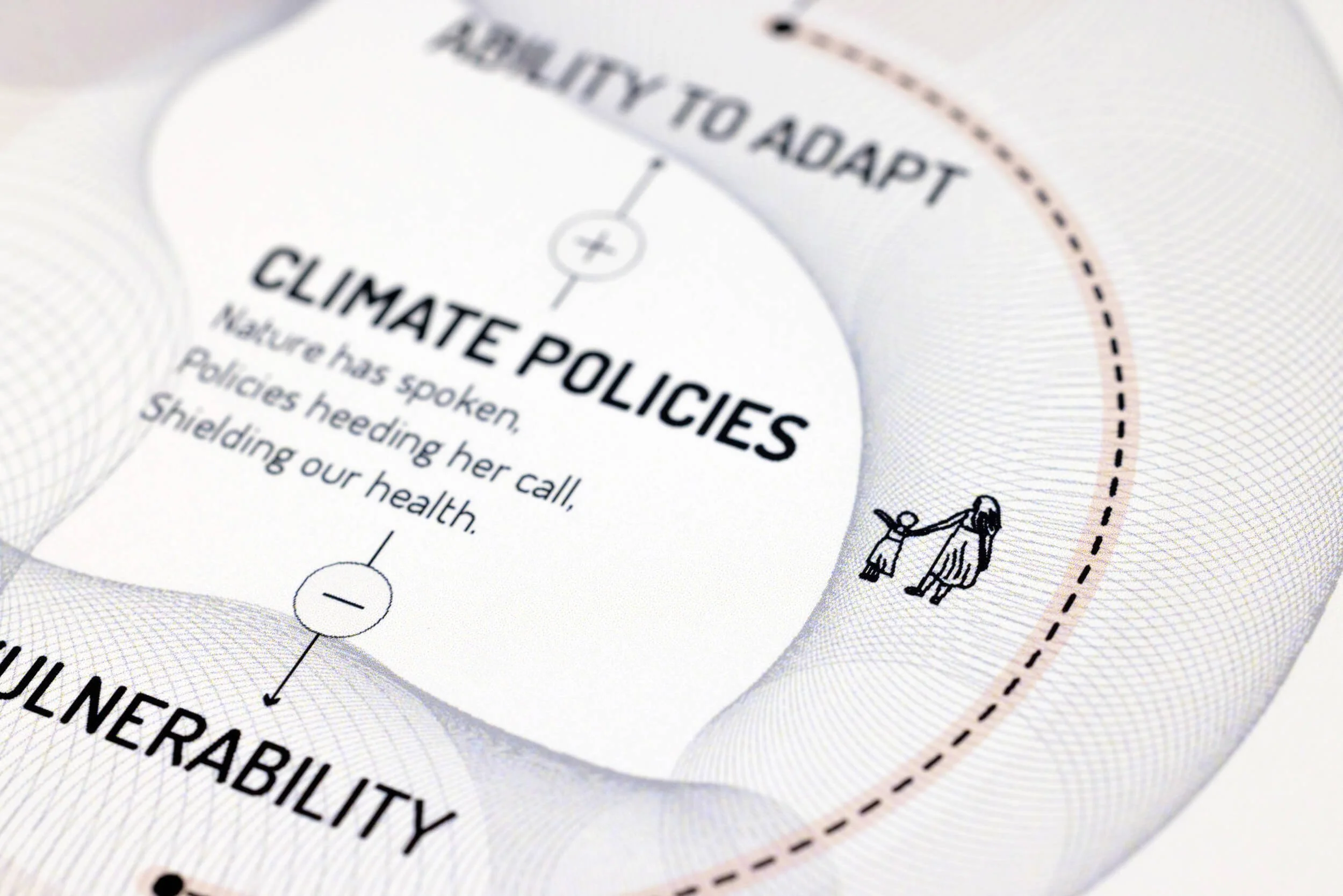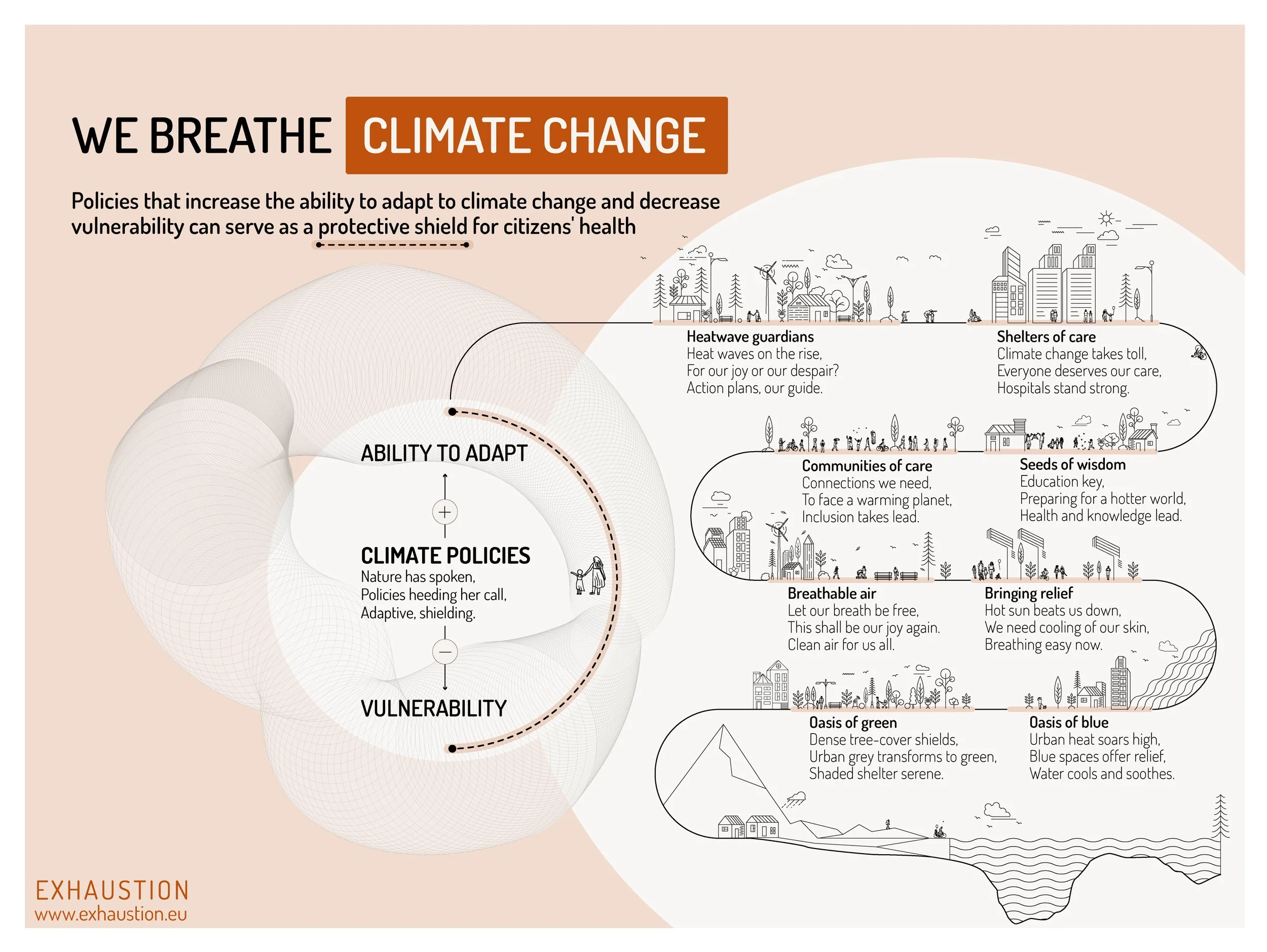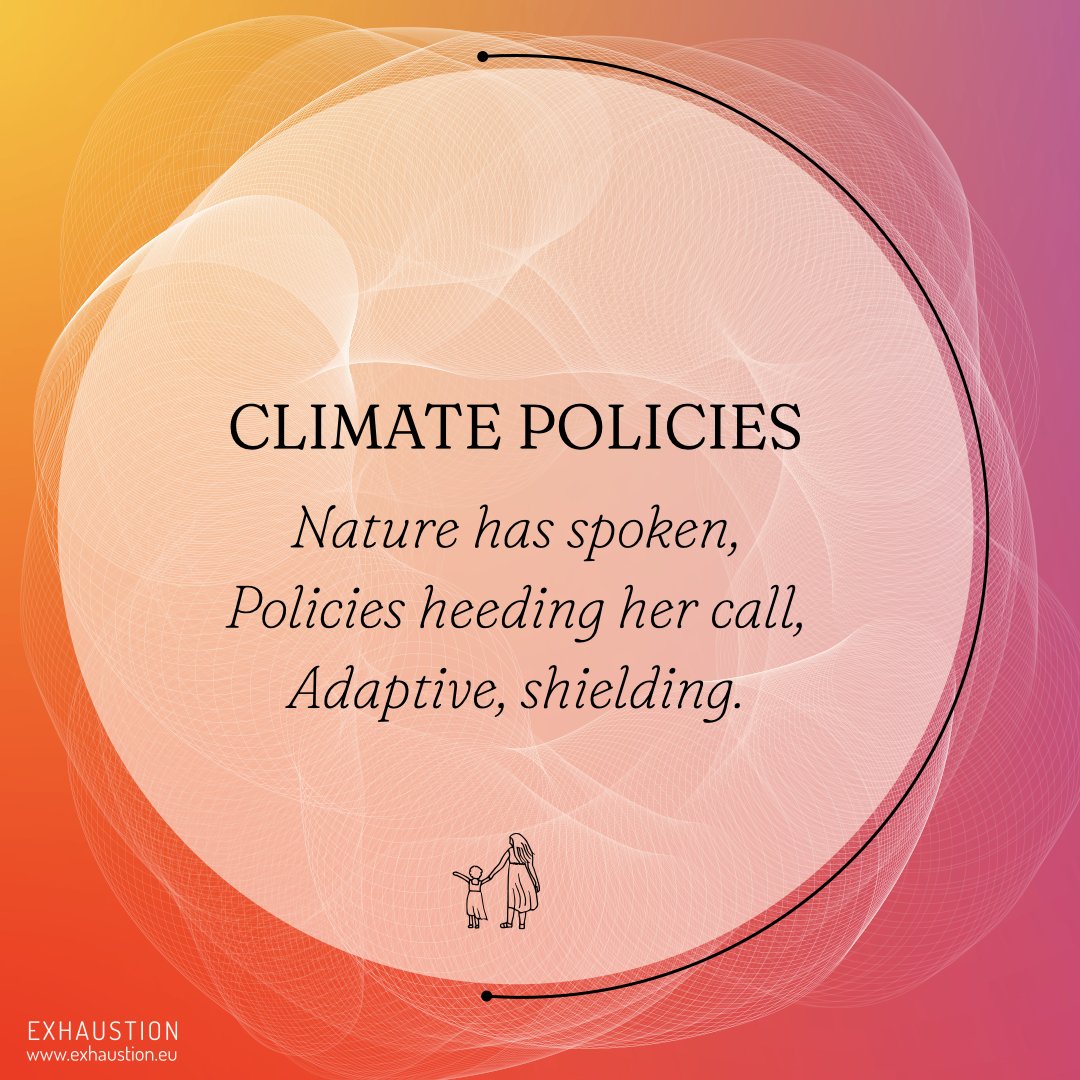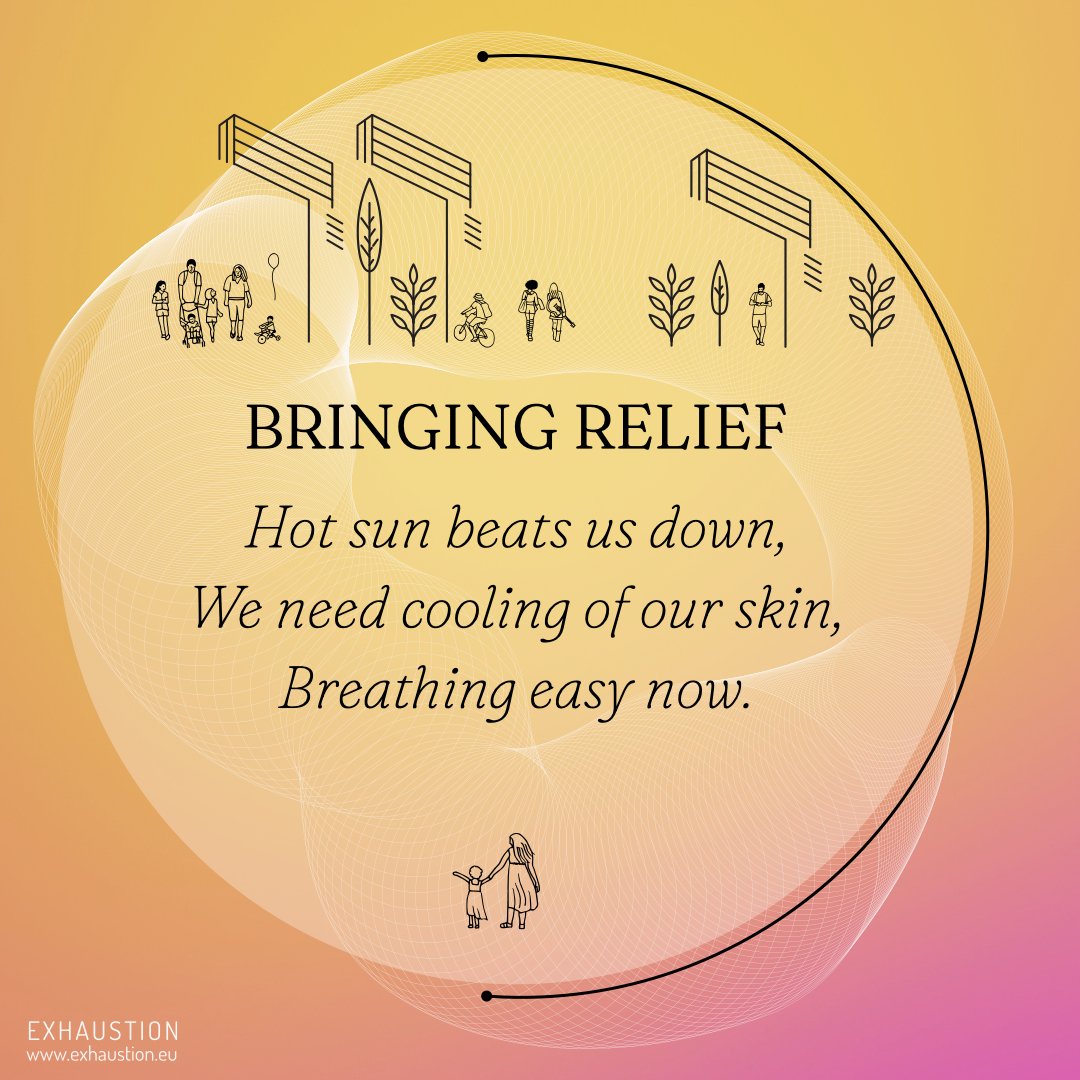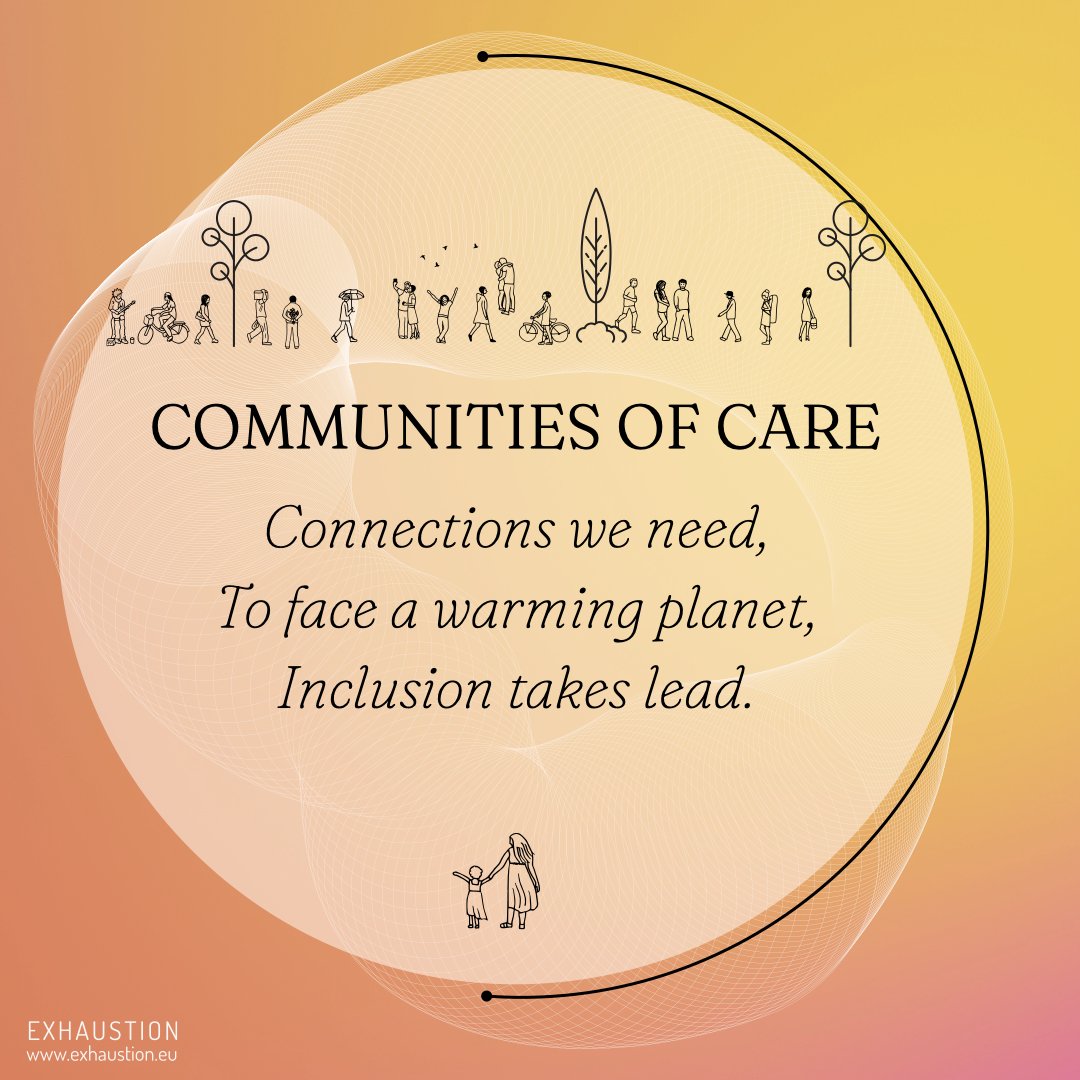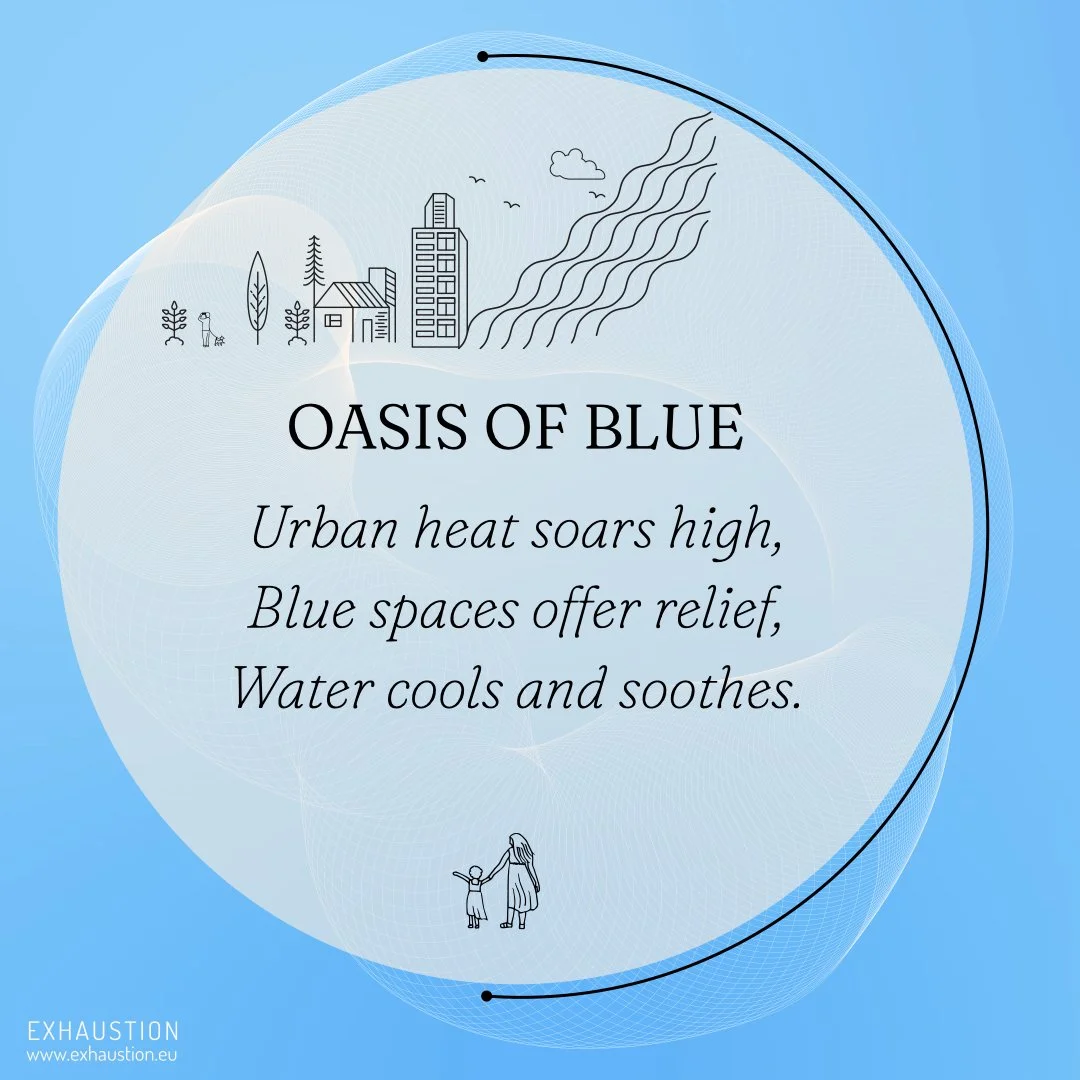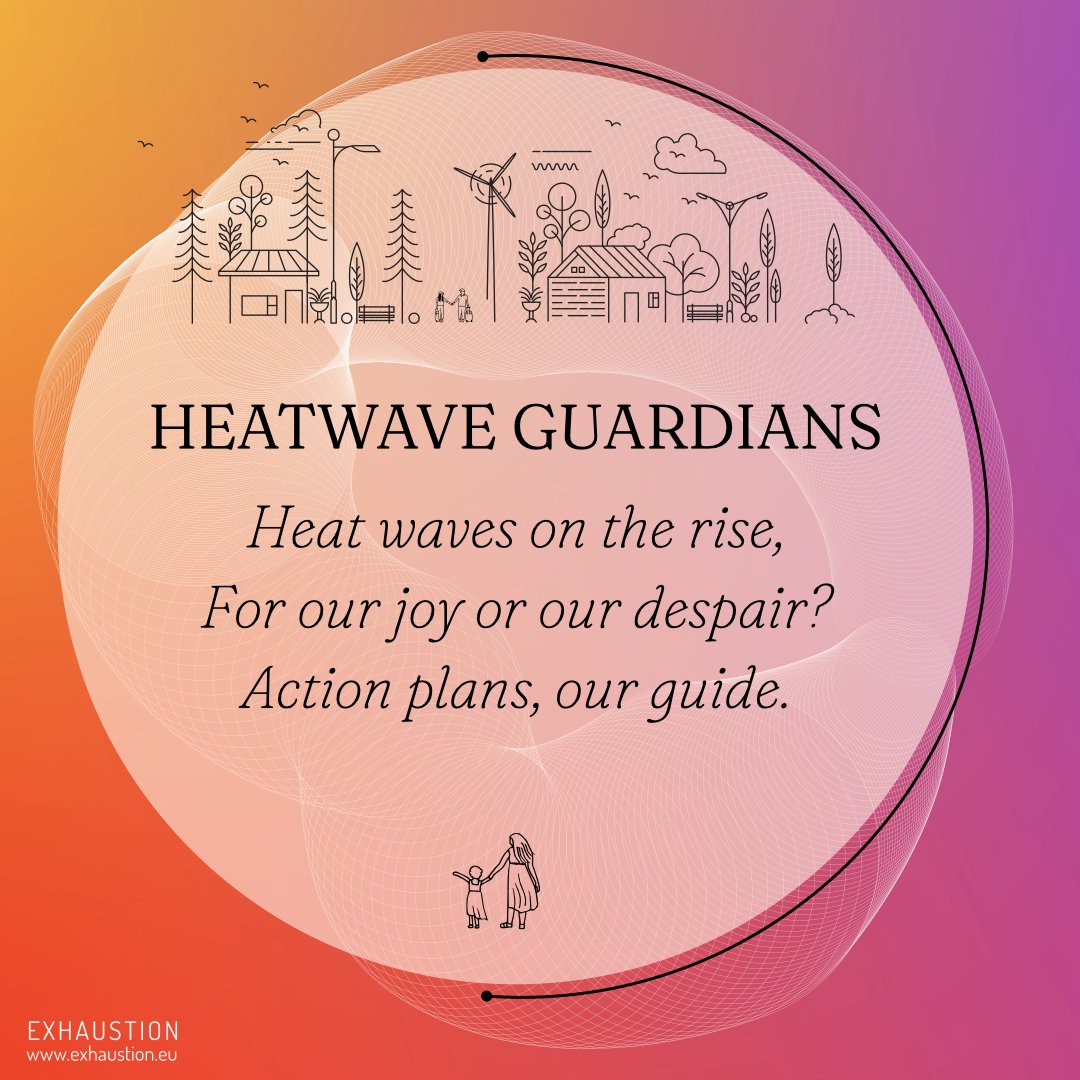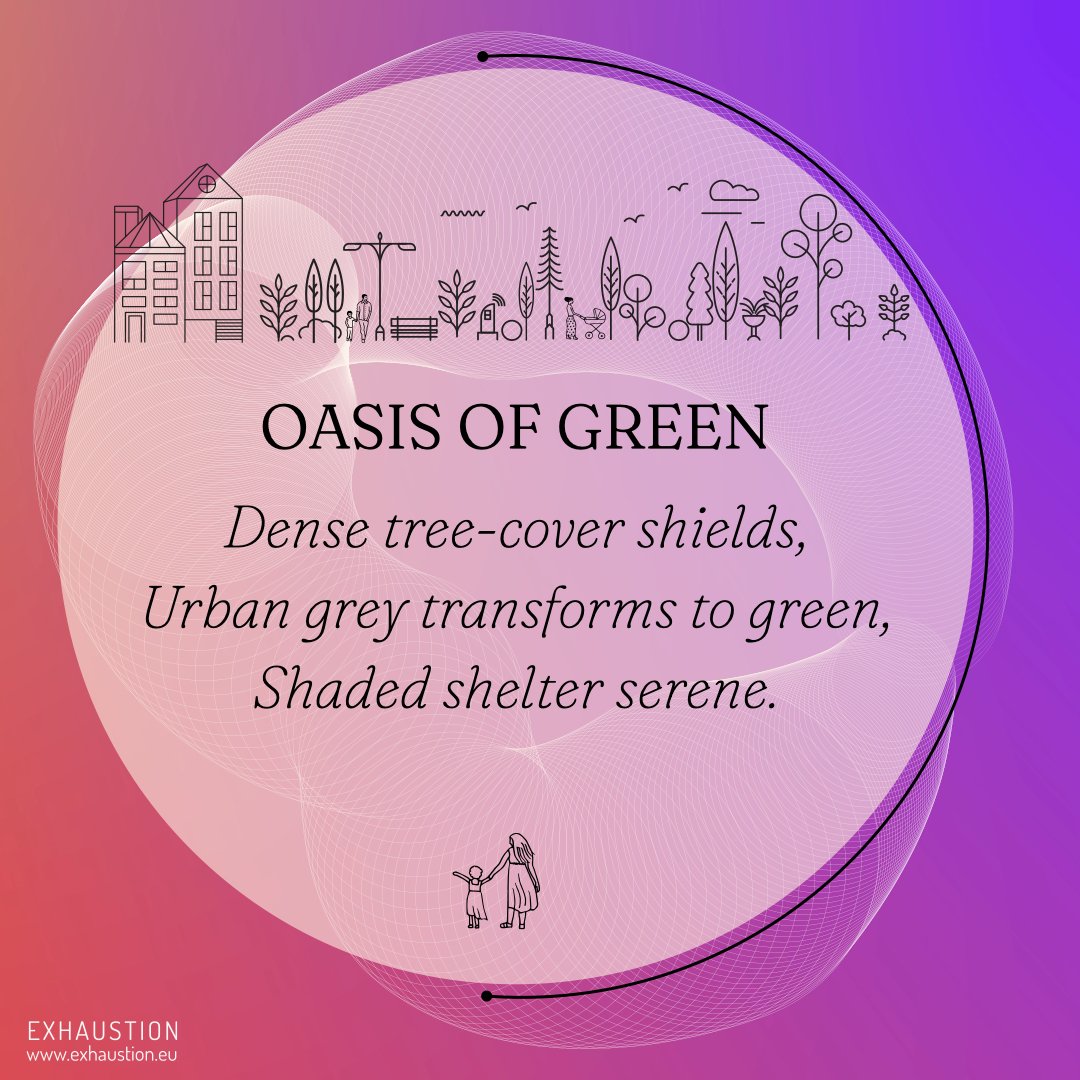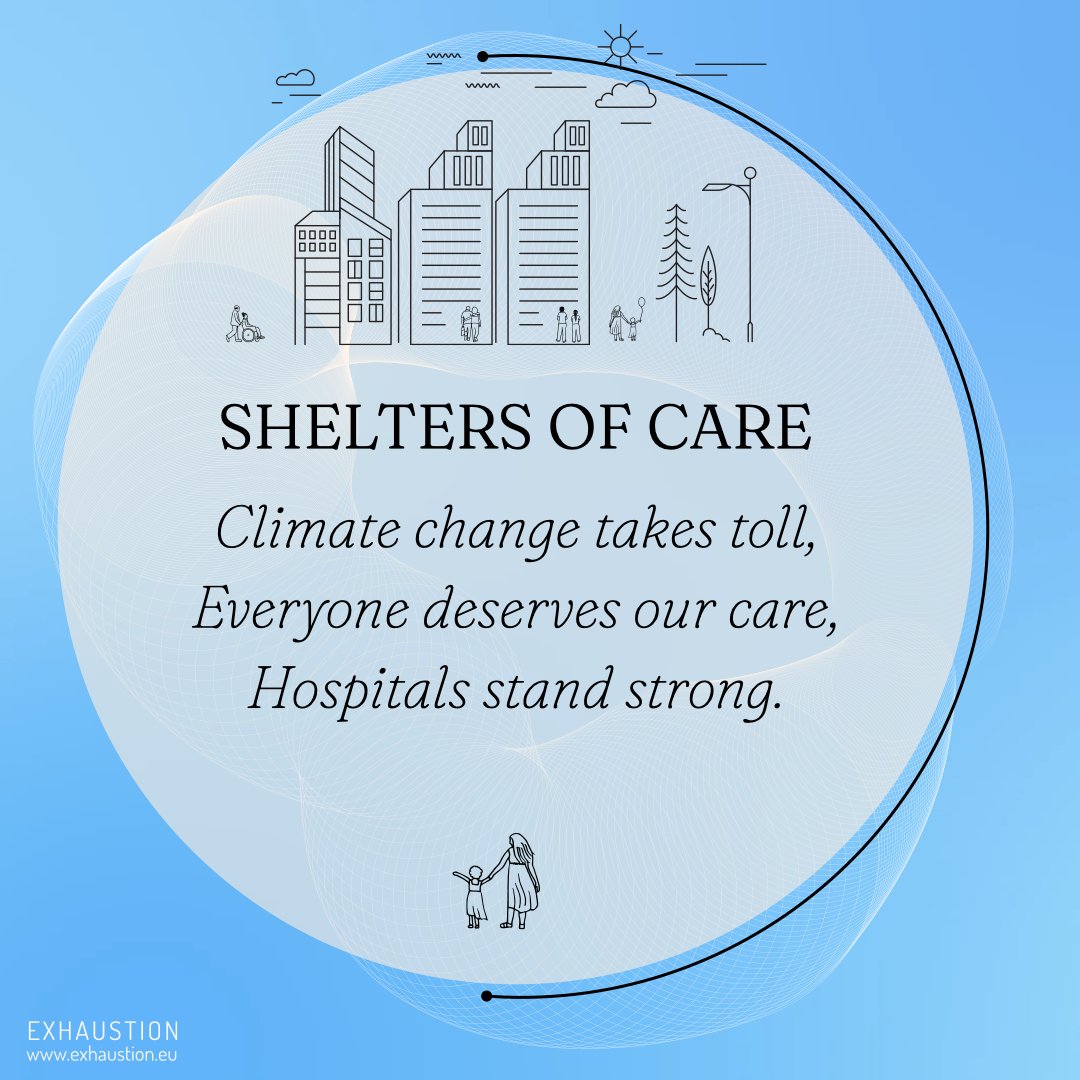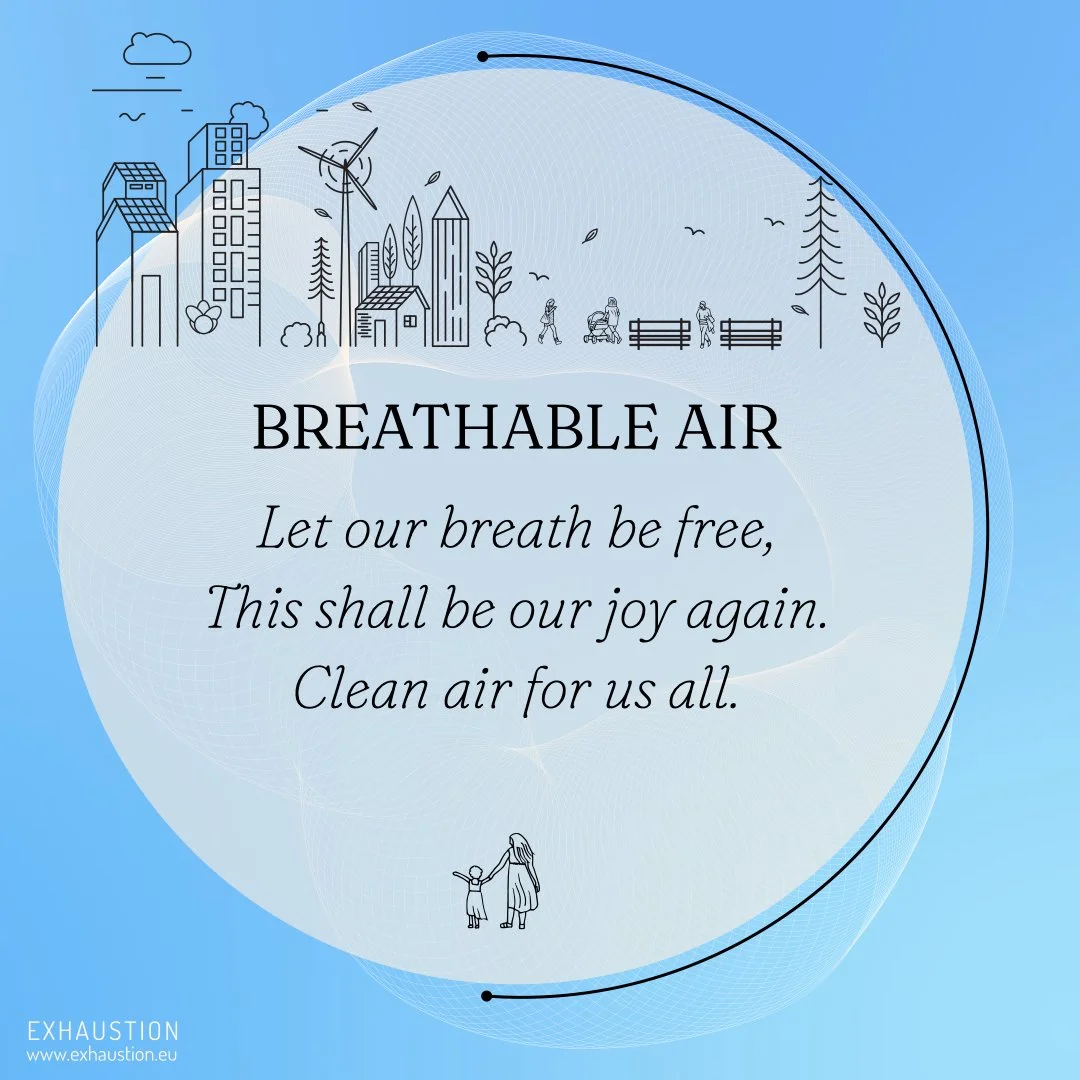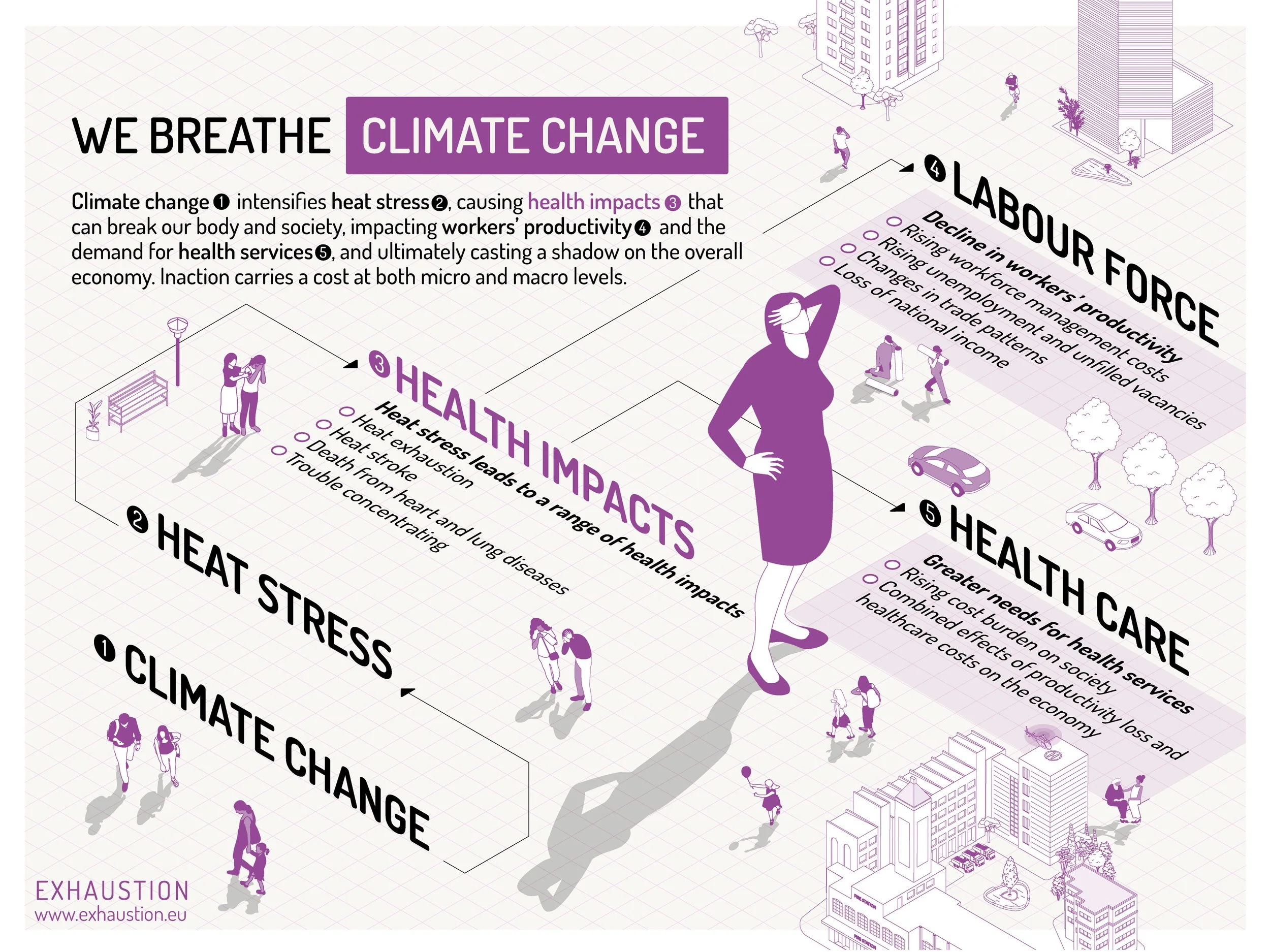EXHAUSTION is a four-year research project aimed at quantifying the changes in cardiopulmonary death and disease due to extreme temperatures and air pollution in Europe under selected climate scenarios, the associated costs and the socio-economic consequences, while estimating how mitigation and adaptation strategies would reduce the health risks and costs.
The project has placed significant emphasis on effectively communicating research findings to diverse audiences. Over the years, a team of professional science communicators and information designers has collaborated closely with scientists from the outset to identify storylines and to co-design a set of visualisations that convey key research findings. This article highlights some of those findings, illustrated through some of the design work developed during the four-year collaboration.
VISUALISATION 1: The context
Climate change worsens the health impacts of air pollution
Because of human activities such as transport, agriculture and energy use, we pump pollutants (such as gases and particulate matter) and greenhouse gases (such as carbon dioxide, methane and nitrous oxide) into the air.
On one hand these emissions build up in the atmosphere causing climate change acting much like a blanket trapping heat, on the other hand they pollute the air we breathe, making air pollution the single largest environmental health risk in Europe. Air pollution causes up to 800,000 deaths a year in Europe and 8.8 million worldwide*.
Climate change leads to increasing temperatures and more frequent heat waves, posing health risks to humans due to heat stress. Hot temperatures increase death rates and can exacerbate a range of diseases. In particular, heat increases death and hospitalisation for cardiovascular and respiratory conditions. .
Climate change also causes changes in air pollution, including from wildfires which amplify the heat-health impacts.. The good news is that we can protect the health of millions of people by implementing climate and air-quality policies.
VISUALISATION 2: The size of the problem
More people will die of lung and heart diseases in our cities when high temperatures are combined with high levels of air pollution. This is especially true for those of us who are 65 and older.
Across European cities, cardiovascular and respiratory deaths increase in association with high summer temperature, with a higher risk for respiratory deaths than for cardiovascular. The risk is enhanced when people are exposed to high levels of air pollution at the same time.The interaction between heat and air pollution (so-called heat effect modification) was stronger for respiratory deaths than for cardiovascular deaths. Heat effect modification was found both for particulate air pollution and ground-level ozone.
VISUALISATION 3A: Mitigation
By the end of the century climate change may have claimed over 2 million lives in European cities, but policies that reduce greenhouse gas emissions could save most of them.
Both heat and cold extremes are causing premature deaths in cities across Europe and climate change is expected to impact the health burden due to temperature changes.
As the planet warms, the number of deaths due to cold weather is expected to decrease. This is because, with climate change, winters are becoming milder, reducing the risks associated with extreme cold. However, this seemingly positive change comes with a significant downside. The research by the EXHAUSTION consortium shows that the decrease in the number of deaths due to cold weather will be largely offset by a dramatic increase of heat-related deaths. The increase in heat-related mortality is due to increasing ambient temperatures and more days of extreme heat resulting from a warming climate
In summary, while fewer people might die from cold conditions in the future, this benefit is overshadowed by the growing threat of extreme heat.
VISUALISATION 3B: Adaptation
Policies that increase the ability to adapt to climate change and decrease vulnerability can serve as a protective shield for citizens' health.
Policies that reduce our vulnerability to climate change and increase the ability to mitigate and adapt can serve as a protective shield for citizens' health. The visualisation illustrates some factors that can increase vulnerability, such as social isolation and lack of knowledge, and examples of adaptation measures that can protect people, such as early warning and heat action plans, access to health care for all, reducing air pollution and increasing green and blue areas in cities. The design unfolds around two layers: the use of poetry in haiku style and the use of three dimensional shapes to convey a dynamic idea of transformation. An haiku is a traditional form of Japanese poetry. Haikus often evoke a feeling of nature or a particular season and are typically focused on a single image or observation.
VISUALISATION 4: The cost of inaction
Climate change intensifies heat stress, causing health impacts that can break our body and society, impacting workers’ productivity and the demand for health services, and ultimately casting a shadow on the overall economy. Inaction carries a cost at both micro and macro levels.
Climate change connects all aspects of the environment, everywhere, and no individual, no community and no country can escape it.
Because of heat stress, climate change affects the health of human beings and their work productivity. The effects on the individuals ripple through different paths, ultimately influencing the overall society and economy.
What starts with our body creates, on a micro level, an individual reaction that impacts our health risk. The ripples from the micro level amplify on a macro level, because our health, as citizens and as workers, deteriorates, therefore employers, companies, the healthcare system will need to adjust and deal with the consequences. When the effects at the micro level become significant, they will spur structural changes throughout the economy at a macro level and economies slow down.
Micro level
Our bodies are the epicentre of the ripples created by climate change. When it gets really hot, the body tries to adapt to keep its temperature stable – about 37 °C, a few degrees more or less and life could not continue. The human body is quite good at adjusting, but it’s not perfect. If the body is already busy fighting a disease; if it is exhausted due to hard, long, work hours without rest, water and shade; if it’s too hot for sleeping at night; if it is worn by old age, physical inactivity, poverty and stress; then the capacity to thermoregulate can be insufficient, until the body collapses and breaks. Diseases caused by heat decrease the quality of our free time, our education, our performance at work, and the lifespan of some people, too.
Macro level
Inevitably, what happens to individuals and their health can affect society at large. When a rising share of workers cannot work at full capacity, periodically falls ill due to heat stress, gets injured or exhausted there are cascading effects and widespread societal impacts. These issues, causing family suffering and financial loss, can also affect the broader economy, prompting companies across sectors to change their usual practices. Firms will increasingly need to replace workers, losing both experienced personnel and newly trained newcomers. This will lead to more frequent worker replacements and challenges in doing so, reducing labor productivity and causing economic losses on a larger scale. Moreover, the same health issues reducing labor force productivity will increase the demand for health services, putting extra strain on already limited healthcare budgets.

